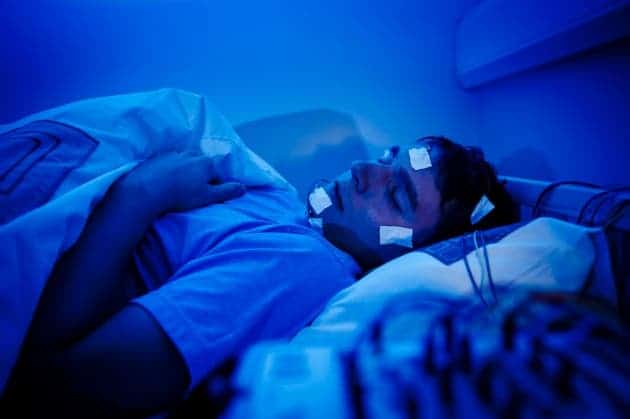
We sleep for roughly a third of our lifetime. All complex organisms sleep, one way or the other, and clearly this is a highly important aspect of biological functioning, otherwise nature wouldn’t had allow it. Oddly enough, we still know very little about what happens during sleep and it’s key functions. For one, it’s been proven that sleep plays a major role in memory consolidation. As such, active manipulation during sleep phase can turn up some very interesting outcomes, which is why scientists, psychologists in particular, are exploring ways of accessing sleep mechanisms. A novel research by researchers at Northwestern University, for instance, have shown that it is possible to calm fears during sleep – the first time emotional memory has been manipulated in humans during sleep.
Omlette du fromage
Previously, it was shown that things like spatial and motor sequence learning can be enhanced during sleep through various stimuli. Concrete concepts like quotes or stories can’t be relayed effectively, however, to a sleeping person. You might have heard of so called sleep-learning techniques typically involving playing a recording while you sleep. In a famous episode from the animated series “Dexter’s Laboratory” Dexter wants to learn French fast without wasting time during wake time when he was more important things to do, like inventing. So he plays a French for dummies class in his headphones while he sleeps; the records slips however so the phrase “omlette du fromage” keeps looping back and forth all night. Consequently, the next day the only thing he can say is …. “omlette du fromage”. The phrase is the only thing he can utter, but soon enough it lands him fame and stardom. It’s an extremely entertaining episode and I had loads of fun watching it when I was a kid. Sleep-learning has been shown to be nothing but rubbish quite early since the 1960’s, though. Basically, when your asleep the brain is tuned to fundamentally different frequencies than when you’re conscious and able to absorb outside information – nothing passes through, unless you’re just about to be awake. This window is so short-lived that it’s been deem impractical to actively receive information from the outside during sleep, let alone learn to speak French.
Subtle stimuli can however influence a sleeper. In the Northwestern study, 15 subjects were presented with two different, but neutral faces. One of the faces, however, induced fear to the participants. When the said picture was viewed, a mild electrical shock was applied to the participant while an odor was also released so the face and the smell became associated. Subjects received different odorants to smell with each face such as woody, clove, new sneaker, lemon or mint. To avoid bias, an odor was released when viewing the non-fear inducing face as well.
While the participants was asleep, one of the two odors was released, absent the electrical shock and, obviously, the face. This occurred during slow wave sleep when memory consolidation is thought to occur.
“While this particular odorant was being presented during sleep, it was reactivating the memory of that face over and over again which is similar to the process of fear extinction during exposure therapy,” Hauner said.
Exposure therapy aims to cure people’s phobias by basically confronting them directly with their fears. It can be very difficult at first for patients, but it does work. Typically, it’s made in steps. If you’re chronically afraid of clowns, a therapist might first show you some pictures, then play subtle clown-specific sounds, take you to see a circus from afar, before ultimately confronting you with a full-fledged clown.
Sleep on it
The results the Northwestern researchers had with their fear reducing therapy during sleeps seem to be similar to those of exposure therapy. When the subjects woke up, they were exposed to both faces. When they saw the face linked to the smell they had been exposed to during sleep, their fear reactions were lower than their fear reactions to the other face. This was measured in two ways: for one, the participants’ level of sweat release was measured – a physiological indicator of fear – and second fMRI scans were performed. The scans showed changes in regions associated with memory, such as the hippocampus, and changes in patterns of brain activity in regions associated with emotion, such as the amygdala. These brain changes reflected a decrease in reactivity that was specific to the targeted face image associated with the odorant presented during sleep.
“It’s a novel finding,” said Katherina Hauner, who did the research as a postdoctoral fellow in neurology at Northwestern University Feinberg School of Medicine. “We showed a small but significant decrease in fear. If it can be extended to pre-existing fear, the bigger picture is that, perhaps, the treatment of phobias can be enhanced during sleep.”
Could this technique be used effectively to treat real phobias gained in a life time, not just engineered ones? Hauner notes that real traumatic memories, especially very old ones, could be much more complicated to treat.”This is a very novel area,” she says. “I think the process has to be refined.”
The findings appeared in the journal Nature Neuroscience.



